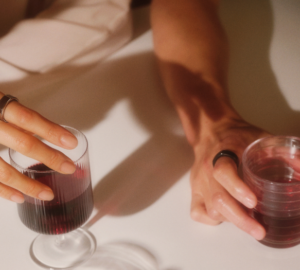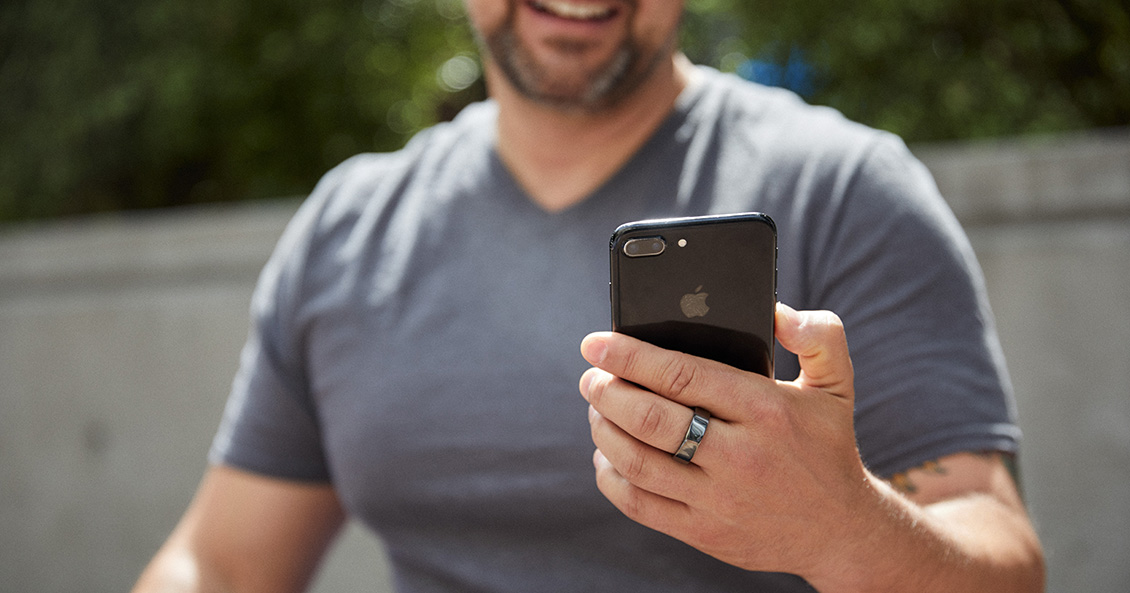Your resting heart rate (RHR) refers to the number of times your heart beats per minute when you’re at rest — in other words, when you’re sitting, lying down, or asleep. Overnight resting heart rate is one of the contributors to your Oura Readiness Score. It answers the question: How recovered was my body last night?
An overly high or low resting heart rate may mean you’re stressed and not getting enough rest, or perhaps your immune system is fighting something. Keep reading to learn more about this important metric.
What is a Good Resting Heart Rate?
It’s important to keep in mind that RHR is a very individual metric. Much like heart rate variability (HRV), it varies person to person. However, most healthy adults can expect resting heart rates to range from 60 to 100 beats per minute, according to Mayo Clinic.
In general:
- Low RHR is often associated with good fitness and overall health.
- High RHR is often associated with stress (both good and bad).
- Abnormally high or low RHR compared to your baseline can be an early warning sign that something is challenging your body. Consider taking it easy if you notice a spike in your RHR.
Younger people, as well as very physically fit people, such as elite athletes, tend to have lower RHR in general. (Well-trained, young athletes can have an RHR in the 30s or 40s!)
LEARN MORE: What is the Average Resting Heart Rate for Oura Members?
While there’s a wide range of what’s “normal,” a consistently high or low RHR can be a sign to talk to your healthcare provider. If you have a consistently low RHR (less than 60) and you are not an athlete, it could signify a condition called bradycardia, especially if it is accompanied by dizziness. On the other hand, a consistently high RHR (more than 100) could signify an arrhythmia called tachycardia or another heart problem.*
How Should I Track My RHR?
The best way to find your average is by using a wearable device, like the Oura Ring, that measures your RHR in a similar setting over a few weeks. Ideally, RHR is measured at night when your body is in a consistent state. No wearable device? Find out how to measure your resting heart rate manually on Harvard Health.
Helpful metrics to keep track of are:
- your lowest RHR during the night (a number)
- your changes in RHR during the night (a graph)
Your lowest nightly RHR is a good baseline metric of your health and well-being. In addition, tracking how your resting heart rate changes as you sleep may help you better understand how your body and mind recover from daily strain.
READ MORE: Heart Rate Recovery: Why It Matters and How to Calculate Yours
How Does Oura Ring Measure My Resting Heart Rate?
Oura measures RHR during your time in bed, explains Heli Koskimäki, Ph.D., Head of Future Physiology, Science, at Oura. Oura excludes periods of time over two minutes where activity intensity exceeds or corresponds to slow walking (i.e. toilet breaks).
“In practice, PPG measurement technology is used meaning that the Oura Ring sends infrared radiation (invisible to the human eye) light to your finger at a sampling rate of 50hz and uses absorption of this light to estimate each individual heartbeat,” she says. “With each heartbeat, more blood is pumped to your arteries, and this arrival peak is found while more light is absorbed.”
How accurate are Oura’s RHR measurements? Extremely accurate. In fact, research shows that the Oura Ring’s measurements has proven to be near-perfect for resting heart rate (r² = 0.996) when compared to a medical-grade ECG device.
The Oura App provides members with the following RHR metrics:
- Average RHR: Your average RHR captured during the night
- Lowest RHR: Your lowest RHR value captured during the night
- Your RHR Trace: Your RHR values captured every 10 minutes throughout the night, displayed in the graph view
You can find this data in your Readiness and Sleep tabs, as well as in Trends.
Note that Oura interprets a resting heart rate on par with your average as a sign that your mind and body are recovering well during sleep.
| Member Tip: When Oura calculates your Readiness Score, both high and low heart rates (compared to your own average) can lead to lowered Readiness Scores. The reason: low heart rate indicates low arousal which leads to a lowered state of readiness, while high heart rate indicates that something is challenging the system. |
What Factors Influence My Resting Heart Rate?

Your RHR is affected by a number of factors, some of which are easier to modify than others. Factors within your control include:
- Consistent bedtimes: Research has found that going to bed even 30 minutes later than your usual bedtime can lead to a significantly higher resting heart rate.
- Drinking alcohol: Even a single drink can impact your resting heart rate. In one study, consuming one drink resulted in on average a five-beat-per-minute elevation in heart rate over the course of the next six hours, while two or more drinks showed an even more pronounced heart rate increase over a 24-hour period.
- Hydration: Studies show that even mild dehydration can lead to increased RHR.
- Smoking: Because nicotine is a stimulant, smoking can increase your RHR.
- Caffeine: When caffeine is in your system, it activates your nervous system and increases your resting heart rate (RHR). This can interfere with your ability to wind down before bed and may be evident in your overnight RHR pattern as you sleep.
- Physical fitness and activity: As noted above, a lower RHR generally signifies good fitness. In fact, the best way to improve your RHR is simply through regular cardiovascular exercise — walking, jogging, cycling, or swimming all count.
- Intense training: It’s normal for your nighttime RHR to be higher than usual when recovering from a day involving intense exercise. As you increase your training volume and improve your fitness, your RHR should start to decline over time.
Other factors outside of your control that can impact your RHR include:
- Illness: A higher RHR can indicate your body is fighting off an infection or illness.
- Age: RHR changes as you age.
- Medications: Some prescription or over-the-counter medications, such as thyroid medication, can lead to an elevated RHR, while meds such as beta-blockers tend to slow it down. If you notice your RHR changing after starting a new medication, talk to your doctor about alternatives.
- Gender: Females on average tend to have higher RHR than males for the reasons outlined above.
- Hormones: For women, your RHR may rise during the second half of your monthly cycle.
- Emotions and stress: Higher-than-average RHR can be a sign that you are chronically stressed.
*Disclaimer: The Oura Ring is not a medical device and is not intended to diagnose, treat, cure, monitor, or prevent medical conditions/illnesses.
About the Oura Expert
Heli Koskimäki works as Head of Future Physiology at Oura. She joined Oura Science Team in 2016 and has experience from biosignal processing to feature development. Heli has a Ph.D. in Computer Science from University of Oulu where she specialized to data mining especially regarding wearable sensors data and human-centric applications. She is based in Oulu, Finland.











